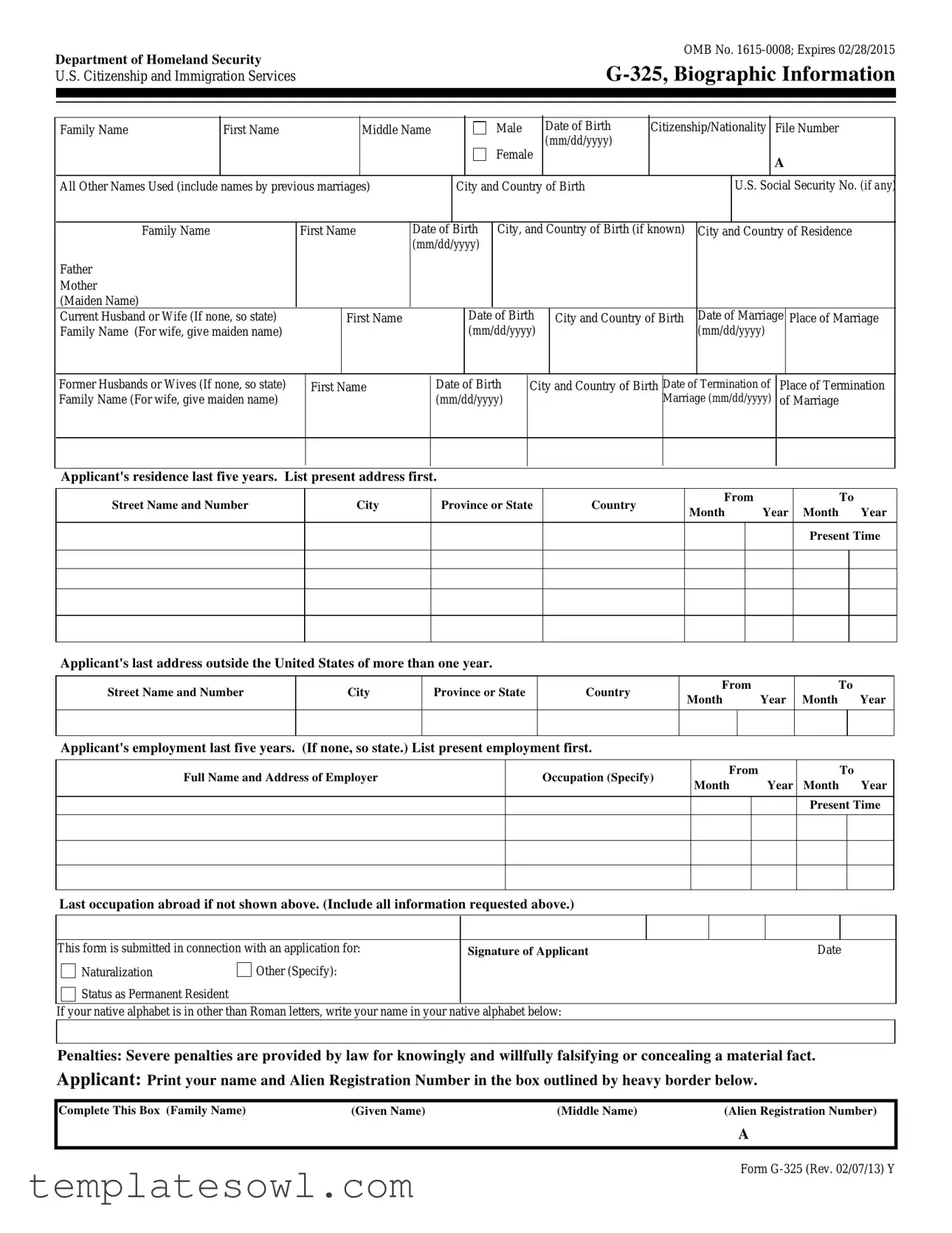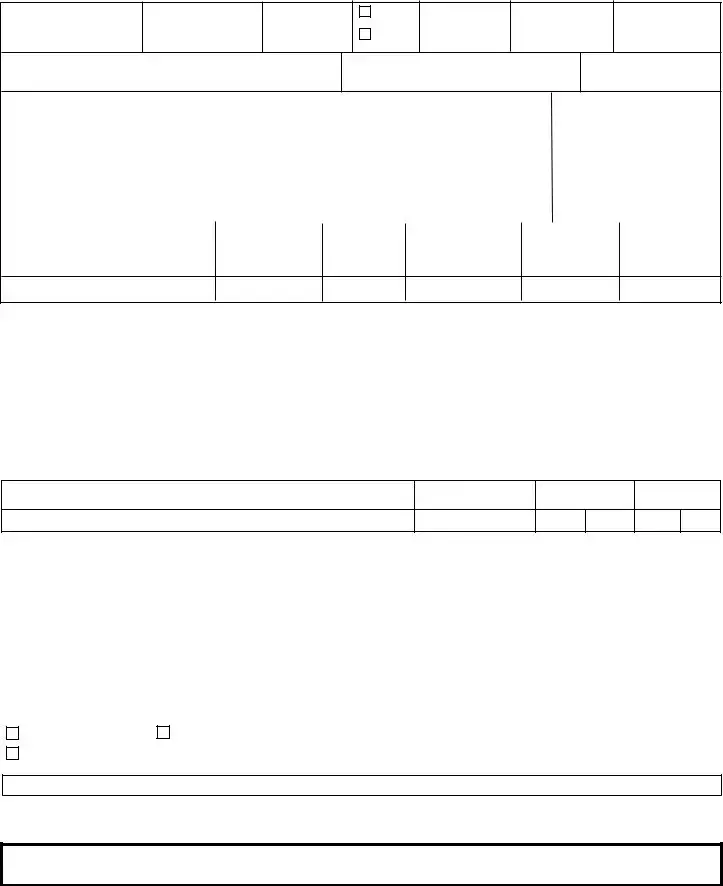What is the purpose of the G-325 form?
The G-325 form, also known as the Biographic Information form, provides essential biographical details to the U.S. Citizenship and Immigration Services (USCIS). The information collected helps USCIS process your application or petition for immigration benefits. It ensures that they have accurate details about your identity, family history, and residence, which are crucial for evaluating your eligibility.
Who needs to fill out the G-325 form?
This form is typically required for individuals applying for naturalization or those seeking permanent resident status. Anyone who is involved in an application or petition that requires biographical information may need to complete the G-325. It’s important to check the specific application instructions to confirm whether the G-325 is necessary for your situation.
What information is required on the G-325 form?
The G-325 requires various pieces of information, including your full name, date of birth, citizenship, and details about your family, such as your parents and spouse. Additionally, you must provide your residence history for the last five years and employment details for the same period. If applicable, information about former marriages is also needed.
How do I submit the G-325 form?
The G-325 form should be submitted alongside your main immigration application or petition. Ensure you follow the instructions provided for your specific application. Do not send the G-325 form separately unless explicitly stated. Once completed, include it with your other forms and files when sending them to USCIS.
Are there any penalties for providing incorrect information on the G-325 form?
Yes, there are serious consequences for knowingly providing false information or concealing material facts on the G-325. Doing so can result in severe penalties under immigration law, which may include denial of your application or even legal repercussions. Always ensure that the information you provide is accurate and truthful.
What should I do if I have questions about completing the G-325 form?
If you have any questions or need assistance while filling out the G-325 form, you can contact USCIS's National Customer Service Center at 1-800-375-5283. They provide support for applicants, and you can reach them for help with any parts of the form you find confusing.
Is there a deadline for submitting the G-325 form?
While the G-325 form itself does not have a specific deadline, it is important to submit it along with your main application within the deadlines set by USCIS for that application. Delaying submission could result in processing delays or negative outcomes for your immigration request. Always pay attention to the timeframes stated in the instructions for your application.


